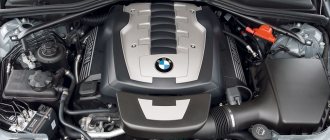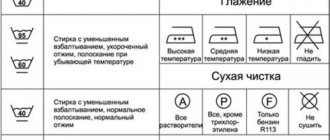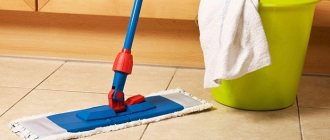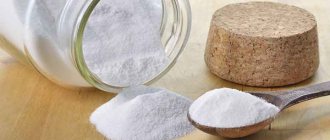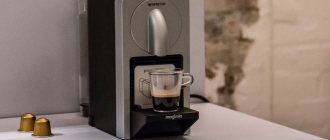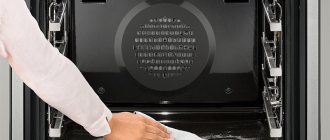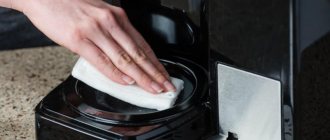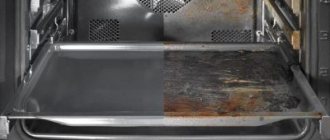Dry ice blasting
Dry ice blasting is similar to other blast cleaning methods in that it prepares and cleans surfaces using a medium accelerated by a stream of compressed air. It differs in that granules or microparticles of solid carbon dioxide (CO 2 ) are used for dry ice cleaning. The particles sublimate upon impact, removing dirt and contaminants without damage. The dry ice cleaning process has unique characteristics that set it apart from other cleaning methods.
Non-abrasive
Cleaning with dry ice is non-abrasive and will not damage equipment. Dry ice is a very gentle medium and can clean sensitive equipment such as sensors or complex moving parts without etching, profiling or changing surface dimensions. Dry ice cleaning can also extend equipment life and reduce the risk of equipment failure and shutdown.
No secondary waste
Dry ice sublimates upon impact with the surface being cleaned, resulting in no secondary waste, residue or moisture penetration. This eliminates additional cleaning, secondary waste disposal, and additional cleaning preparation such as masking sensitive sensors or packaging electronic components before cleaning. This significantly reduces cleaning time and associated downtime.
Ecologically pure
The dry ice used in the dry ice cleaning process consists of recovered CO2, which is collected and reused in other industrial processes. It does not produce more CO2 and does not add additional greenhouse gases to the atmosphere.
It also eliminates the use of environmentally harmful cleaning chemicals and eliminates worker exposure to hazardous cleaning products. It also does not produce toxic waste that must be disposed of.
Non-toxic
Dry ice is a food grade media approved for use in the food industry. It is colorless, tasteless, odorless and non-toxic.
Not electrically conductive
Dry ice does not conduct electricity and does not cause corrosion to the surfaces being cleaned. It also allows electrical equipment to be safely cleaned using dry ice blasting.
Dry ice blasting is also the preferred cleaning method for employees performing this task. Methods such as manual cleaning can be tedious and exhausting. Other methods using toxic materials, such as sandblasting and chemical cleaning, can be harmful to both the worker and the environment.
Application of technology
The ice cleaning technology has no equal in its properties. Therefore, it has found application in many economic areas.
Railway transport
Cryoblasting is used to cleanse:
- electric train motors;
- carts and wheels;
- machine units and other equipment of trains;
- train bodies from paint;
- elements from soundproofing mastic;
- main generator;
- assembled electrical panels without disassembly;
- hard-to-reach areas of nodes;
- turbocharger volute;
- engine valves and pistons;
- body parts.
Use in printing and aviation
In the printing industry, cryoblasting devices are used to remove contaminants from printing and printing machines without disassembling them. And also some of their details. Clean the fastening devices. Remove traces of ink and varnish from instruments and ink deposits from gears.
Aviation uses this cleaning technology when necessary:
- remove dirt from runway lights and lighting fixtures.
- Clean engine parts, reversers, turbines and tow hooks.
- process the casing, remove the mud layer from the drive unit box and chassis.
Production and processing of plastics
In this area, cryogenic blasting is used for cleaning:
- devices producing products from foamed polymers;
- molds for producing plastic bottles and bottles;
- equipment and apparatus - screws, dies, presses involved in the production of various types of polymer products.
Food industry
There is also a wide range of ice-cleanable devices and devices:
- baking sheets, ovens, molds and other containers and compartments actively used for the production of bread and confectionery products.
- mixers, combines, smoking chambers, containers and tanks for storing and processing meat and fish.
- conveyor belts and packaging devices.
Water transport
In the water transport industry, dry ice cleaning is used for:
- Cleaning the hull, plating, propellers and other equipment of the ship’s engine rooms from soot and oil, algae, mucus, shellfish and other contaminants.
- Cleaning water intake valves and elements.
Dry ice is also used to clean cars and equipment for its production; it is used to remove unpleasant odors from the car interior and household premises. Perhaps in the near future there will be devices for cryoblasting at home.
Abrasive blasting (sand, beads, silicone, walnut)
Abrasive blasting involves aggressive cleaning methods that use compressed air to direct a stream of abrasive material onto the surface. The abrasive material varies and can include sand, glass beads, silicone, walnut shells, corn cobs and more. This type of sandblasting is typically used to remove rust, heavily adhered paint, heavy corrosion, and other stubborn contaminants.
Abrasive and destructive
Abrasive blasting is intended for cleaning objects that require a more aggressive method of removal. So while its abrasive nature is a positive for some applications, it can also damage the surface being cleaned.
Abrasive blasting can significantly reduce the life of the tools and equipment on which it is used. It may also cause permanent damage to sensitive surfaces and moving parts of equipment.
Generates secondary waste
Abrasive blasting creates a huge amount of secondary waste. It will need to be collected and disposed of after the job is completed.
Containment, collection and disposal of recyclable waste can significantly increase project time and costs. Setting up containment can take several hours and although this limits the volume of waste to a specific area. In some cases, removal of the resulting waste may take several days.
Impact on the environment
The negative environmental impact of abrasive media depends on the type of media used. For example, walnut shells are biodegradable and less harmful, while materials such as glass, plastic and silicone are harmful to the environment they are cleaning.
Additionally, some methods, such as sandblasting, create fugitive dust that can be toxic if inhaled.
When is the procedure needed?
When operating a machine, the engine becomes exhausted due to various circumstances. This could be unexpected penetration of liquids into the engine compartment, oil leakage, or dust deposits. Contamination can cause rapid overheating of the engine, prevent timely recognition of problems, give the car an unaesthetic appearance, and the presence of oil stains on the engine can lead to fire.
As a rule, the engine is cleaned using various specialized washing liquids or steam. Modern cars are equipped with electronics, so these types of cleaning can harm the car. If drops of water get in contact, the contacts may oxidize and stop working, even causing a short circuit in the wiring. For this reason, if the need arises to clean the engine, it is better to seek the help of specialists in this field.
Soda treatment
Soda scrubbing is mildly abrasive and is generally an effective cleaning method for many types of surfaces. It uses compressed air to blow a fine sodium bicarbonate powder onto the surface.
Generates secondary waste
The main disadvantage of using soda cleaning is the enormous amount of waste that must be contained, collected and disposed of after the cleaning project is completed.
This can add a significant amount of time and expense. Containment must be established in the treatment area before cleaning can begin, which may take several hours. The ultra-fine particles from soda blasting spread across the surface being cleaned and get into crevices and areas that are difficult to remove. Residue can also stick to wood and other sandblasted surfaces, making it difficult to apply paint to cleaned surfaces.
It takes a significant amount of time to collect the generated waste and completely clean the area.
Impact on the environment
If soda blasting is not contained effectively, the waste generated downstream can seep into the soil of surrounding vegetation, which can negatively affect soil pH levels and kill vegetation.
Waste can also become toxic when cleaned with soda to remove hazardous substances and objects. These explosive materials are then classified as toxic waste and require proper and safe disposal.
Abrasive
Baking soda is moderately abrasive, but generally non-destructive. It will not harm materials on most surfaces.
High pressure water jet cleaning
Pressure washing involves accelerating water to create a high-pressure jet that is directed at the area being cleaned. This method is commonly used to remove dirt, dust and other dirt from surfaces. The process is fast and relatively cheap, but has a number of disadvantages.
Generates secondary waste
Pressure washing creates a lot of residual water, and installing a water seal can be challenging. Once Processing is complete, production cannot begin until the equipment is dry, resulting in longer downtime. Sewage can cause serious electrical problems and can also cause problems with motors. All electrical equipment must be properly wrapped before cleaning.
Electrically conductive
Due to the use of water, pressure washing may cause rust on the surface. There is also a risk of flash corrosion, which will cause immediate rust if a rust inhibitor is not used.
Impact on the environment
Wastewater can become contaminated when it is used to dispose of toxic or harmful materials. This water is then classified as toxic and requires proper and safe disposal, further increasing the cost of the project.
Equipment for cryogenic blasting
Equipment for cryoblasting are compact mobile devices, similar to vacuum cleaners, taking into account the features of the technology. Instead of a brush, the cleaner holds in his hands a gun connected by a hose to the body of the machine. There are special containers for storing ice; you can carry spare volumes of working material into them. Let us remind you that during the cleaning process, dry ice evaporates without a trace; the cleaner can only dispose of the garbage collected at the site.
Popular equipment manufacturers:
- CRYONOMIC (Belgium) is the leader in the European production of cryoblasting devices;
- CryoSnow (Germany) - specializes in the production of devices for cleaning large areas;
- COLD Jet (USA) - equipment of various classes, including for domestic work on small areas.
In Russia, the Association of Special Equipment Owners (St. Petersburg) produces blasters for dry ice. The production of the German brand Carblast Fahrzeugtechnik GmbH is also located in the Russian Federation.
Solvent cleaning
Solvent cleaning includes any cleaning process that uses chemical cleaning agents
Abrasive
The process uses caustic chemicals that are abrasive on most surfaces and can damage equipment and tools. When harmful chemicals are used on a surface for repeated cleaning over time, that surface will begin to deteriorate.
Impact on the environment
Chemical solvents include substances that are harmful to the environment and occupational safety. The process involves frequent exposure of employees to toxic chemicals, which can create long-term health problems.
Solvents must also be discarded after cleaning is complete. The waste is considered toxic and must be disposed of properly, which can be costly for businesses.
What it is?
Cryogenic blasting has been popular for over 25 years. Technologically, the procedure is similar to sandblasting of parts. In the first version of cryoblasting, cleansing is performed with dry ice granules, which, when they hit the surface, are converted into a gaseous state. In the second case, cleaning is carried out with small hard particles, which exhibit a grinding effect and spoil the processing plane. The granules are frozen to -80 degrees Celsius. Dirt and stains are broken down and removed from the surface. Frozen granules undergo evaporation and do not harm the thinnest and most fragile parts.
Cleaning Hand Tools
This cleaning process involves scraping by hand or scrubbing with wire brushes, chisels and other tools. This process is time-consuming and tedious. Cleaning with hand tools requires employees to perform repetitive movements that can be harmful and cause short- and long-term health problems.
Abrasive
Repetitive hand movements when scraping or scraping, chiseling, or activities requiring chopping, grinding, or scraping can damage tools, mechanisms, and parts. The abrasive nature of hand tools shortens the life of parts and reduces their performance.
Cleaning hand tools also typically uses chemical solvents, which can further damage the equipment.
